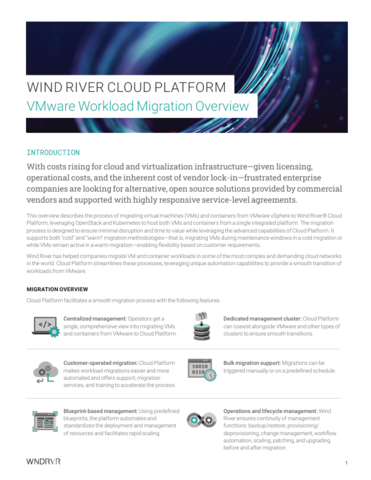Boosting productivity in the digital age

We’ve all been there: The latest Wordle has just come out, a colleague Skypes you for a 10 minute catchup, you find yourself flicking between tabs aimlessly trying to work out what you’re supposed to be doing. Staying productive can be a serious challenge in the digital age.
The world of work has changed irreversibly since the start of the pandemic. With flexible work structures and an increased reliance on technology redefining discussions around productivity, organisations are taking a deeper look at how to get the most out of their employees and business. However, with only 21% of employees in the UK believing that they are truly productive for an entire workday, clearly more needs to be done.
This World Productivity Day, Business Reporter spoke to a range of industry experts to get their advice on building a culture of productivity.
The changing workplace
Implementing flexible work structures can be instrumental in boosting productivity and engagement, making for a happier and more efficient team.
“You get more out of your employees when companies work flexibly, that’s been proven time and time again,” highlights Kathryn Barnes, Employment Counsel EMEA at Globalization Partners. “Flexible working enables workers to establish their own peak performance times, scheduling timely breaks to optimise their efficiency. Furthermore, by trusting employees to manage their own time - and balance work with home responsibilities such as the school-run - employees will feel more incentivised to work efficiently.”
“I’m all for flexible working in the right context,” Hugh Scantlebury, CEO and Founder of Aqilla, adds. “But I think it’s important for junior staff to have the opportunity to work in a traditional office environment alongside their more experienced colleagues. That way they get their grounding, learn about the company’s culture, and grow — and feel like they are a valued part of the team.”
“Ultimately, different working environments and different roles work for different people,” agrees Dave Birchall, Chief People Officer at Node4. “Whilst one role, team or specific activity may be more productive in a home office, others may thrive in a busy, collaborative working space. A dispersed and diverse workforce can be a big challenge for business leaders, but prioritising employee engagement in a flexible environment helps ensure productivity and engagement for all.”
Ease the pressure
When life gets busy it’s easy to jump in headfirst without taking the time to stop and assess the most efficient way to address tasks. However, “it’s important to remember that being productive shouldn’t mean doing more than you’re capable of, or working to the point of burnout,” Terry Storrar, Managing Director UK, Leaseweb urges. “True productivity is about being efficient, streamlining processes, and prioritising what really matters.”
Node4’s Birchall suggests, “whether remote or in the office, colleague wellbeing should always be at the top of a manager’s list. Having regular catch ups with an open and supportive approach will ensure that a sense of community is maintained, allowing team members to contribute to and remain involved in the working life and culture of the business.”
“At Leaseweb, one of our core values is simply ‘get things done’,” adds Storrar. “Encouraging the right mindset and implementing simple yet effective methods, such as the 80/20 rule, can provide immense value. The 80/20 rule states that 80% of a business’ income comes from 20% of its projects. It’s a tool used to highlight the importance of identifying the highest priority work, ensuring that the available resources are being spent on the most valuable projects.”
Drive efficiency through automation
Businesses and their employees are under pressure to be as productive as possible. Michael Queenan, CEO and Co-Founder of Nephos Technologies, notes: “In order to do so, many look to utilising as-a-service tools that can automate time-consuming tasks, as well as improve collaboration and communication.
“This World Productivity Day, we encourage businesses to evaluate which time-consuming tasks are overwhelming their employees and operationalise them to restore productivity and reap the benefits that will deliver.”
Automation software can be crucial for organisations that want to rise to the occasion while keeping their internal operations running smoothly. Gregg Lalle, SVP International Sales and Strategy at ConnectWise, explains how automated technologies are helping Managed Service Providers drive efficiency: “When looking to minimise chaos and drive efficiency, many MSPs are turning to professional services automation (PSA) software to serve as a single source of truth across all integrated apps. Using a PSA solution to automate workflows not only improves staff productivity, it also enhances the customer experience by clarifying accountability and giving clients a more effective way to communicate with your teams.”
For Axway’s UK&I VP/General Manager, Joel Reid, APIs - application programming interfaces are a huge driving force of organisational efficiency. “APIs are the building blocks of brilliant digital experiences and have become vital tools for business growth and technological agility. In short they enable different services to interact and complement each other, opening the doors to a host of engineering and business possibilities. If APIs are not the poster child for World Productivity Day I don’t know what is!"
A balancing act
Increasingly, organisations are investing in software solutions and managed services that automate monotonous tasks to allow employees to focus on other more complex activities.
However, Russell Gammon, Chief Solutions Officer at Tax Systems, urges that automation is not always synonymous with productivity and not everyone considers it a benefit: “Whilst this can be valuable to more experienced teams, the idea that productivity equals speed overlooks the importance of work-based learning, which can be equally as powerful for promoting the long-term productivity of the labour force. If all manual tasks are automated, junior team members will never learn and understand the processes behind them, which could see them struggle in the long run.
Cyber-first productivity
Likewise, when it comes to cyber security, tools and policies can actually stand in the way of productivity, rather than improve it.
“We all know the critical importance of cyber defence, but if little consideration is given to how this impacts employees’ daily workflows, the broader impact can be detrimental,” said Paul Farrington, Chief Product Officer at Glasswall.
“Businesses can’t afford to be held back by manual security checks, so it’s crucial for IT teams to consider the latest security technologies that can provide round-the-clock, automated protection that doesn’t negatively impact productivity, and consequently business growth. For example, Content Disarm and Reconstruction (CDR) is a simple approach that allows employees to open every file and attachment immediately, uninterrupted and without the risk of them containing hidden malicious files.”
Neil Jones, Director of CyberSecurity Evangelism at Egnyte, also discusses how cloud-based data governance can ensure productivity and security when workers are in disparate locations:
“Through deployment of a cloud-based data governance solution, users can collaborate securely on sensitive data in the cloud. Their content can still be accessed from anywhere via their preferred devices. Freely managing and editing documents and contracts is not infringed upon, which enables business continuity. Integrating collaborative business apps like Microsoft Teams, Slack, and DocuSign helps to build productivity.”
Finally, Christopher Rogers, Technology Evangelist at Zerto a Hewlett Packard Enterprise company reminds us that backup and disaster recovery is essential for business continuity and productivity. “The process of protecting your data by creating an extra copy is one thing, but organisations need a disaster recovery plan that focuses on limiting downtime and restoring operations in minutes or seconds, not days or weeks. Companies should consider supplementing legacy data protection and moving to continuous data protection (CDP). It’s also good practice to centre a recovery plan around the applications, not simply the data that make up an application.
“Businesses must pre-emptively not only expect an attack, but bolster their ability to recover quickly and minimise disruption and data loss. Protection alone is not enough, A recovery plan is critical for every cyber strategy. Productivity may be the key to success, but IT resilience could be the key to productivity.”
Main image courtesy of iStockPhoto.com

Business Reporter Team
Most Viewed
Winston House, 3rd Floor, Units 306-309, 2-4 Dollis Park, London, N3 1HF
23-29 Hendon Lane, London, N3 1RT
020 8349 4363
© 2025, Lyonsdown Limited. Business Reporter® is a registered trademark of Lyonsdown Ltd. VAT registration number: 830519543






